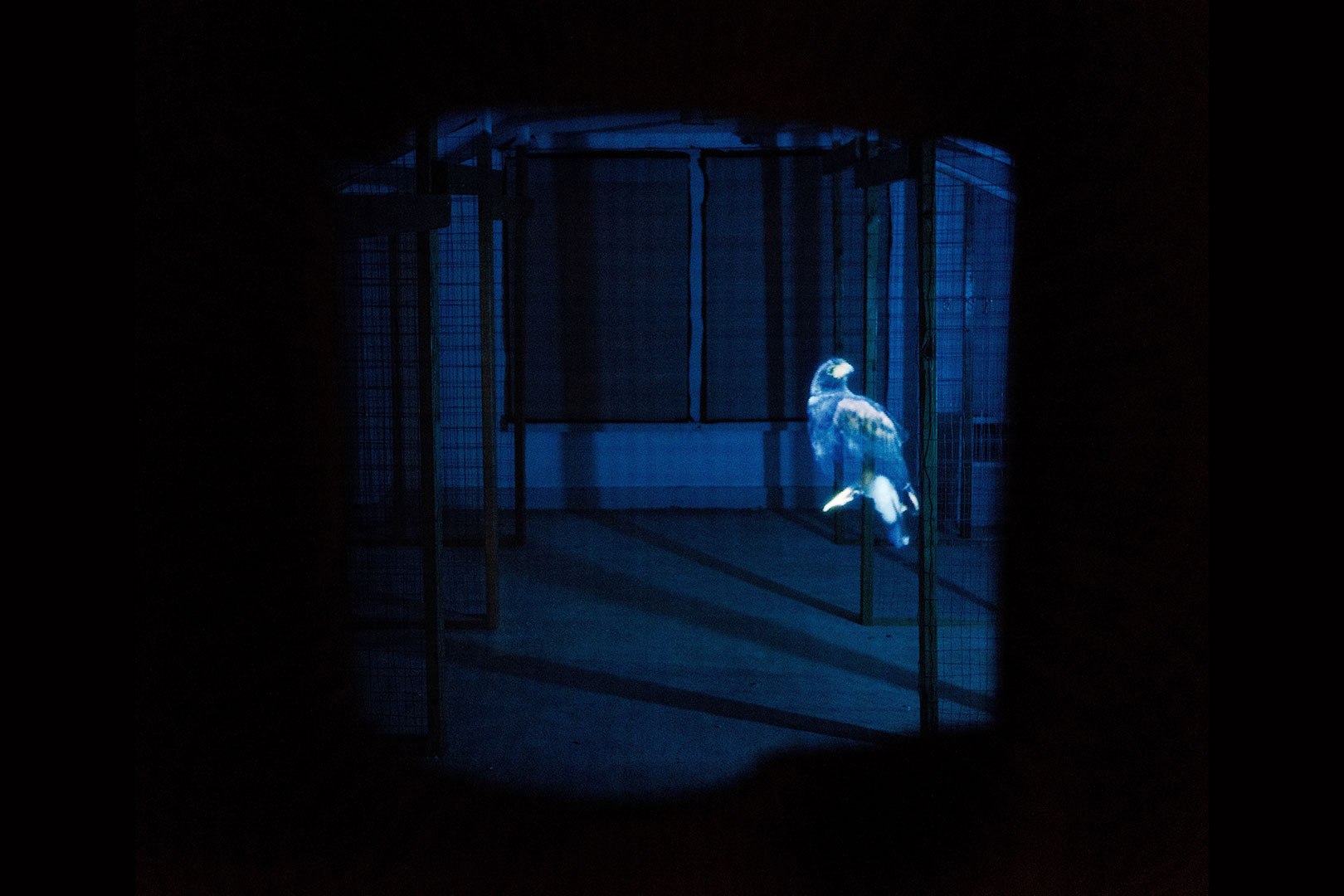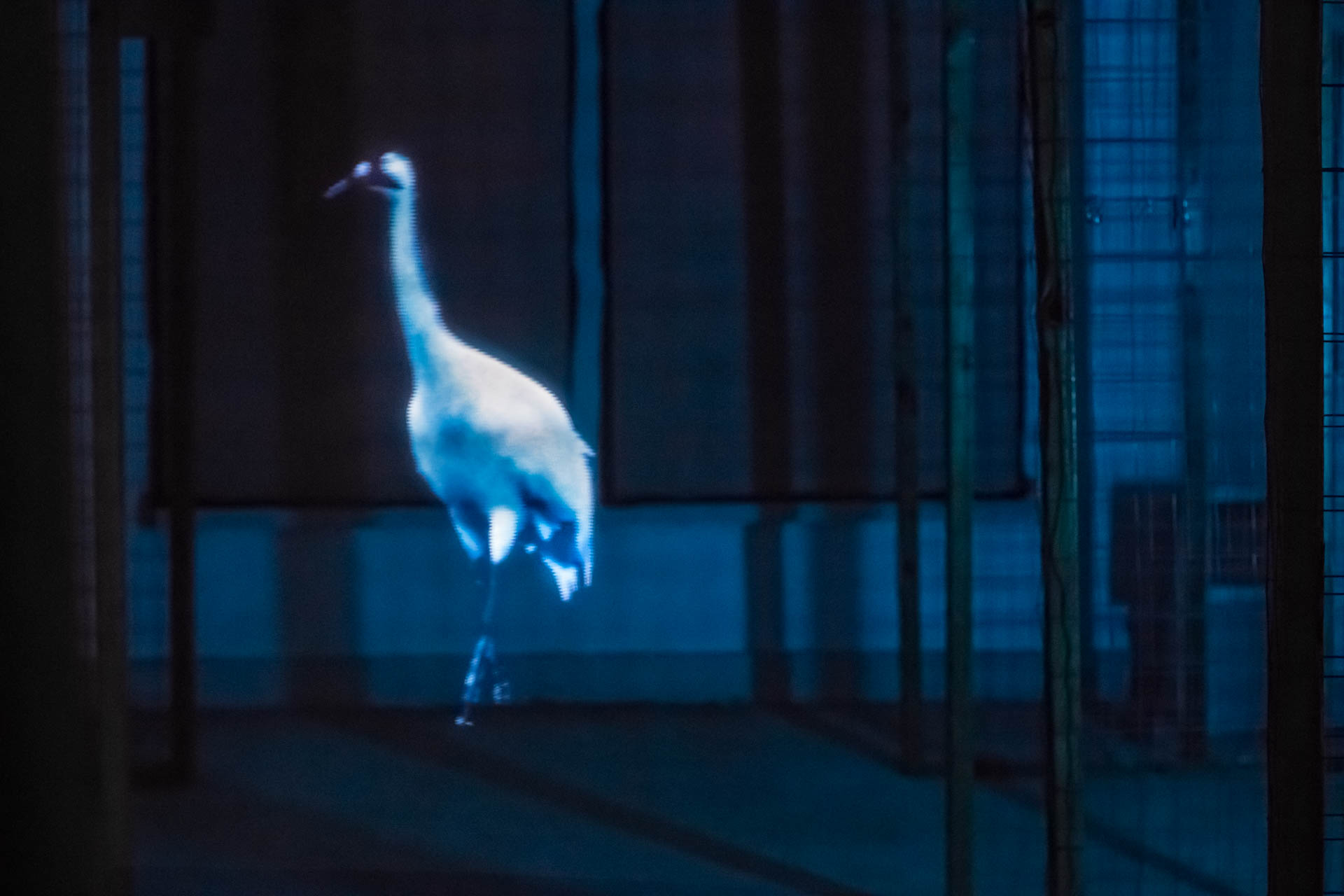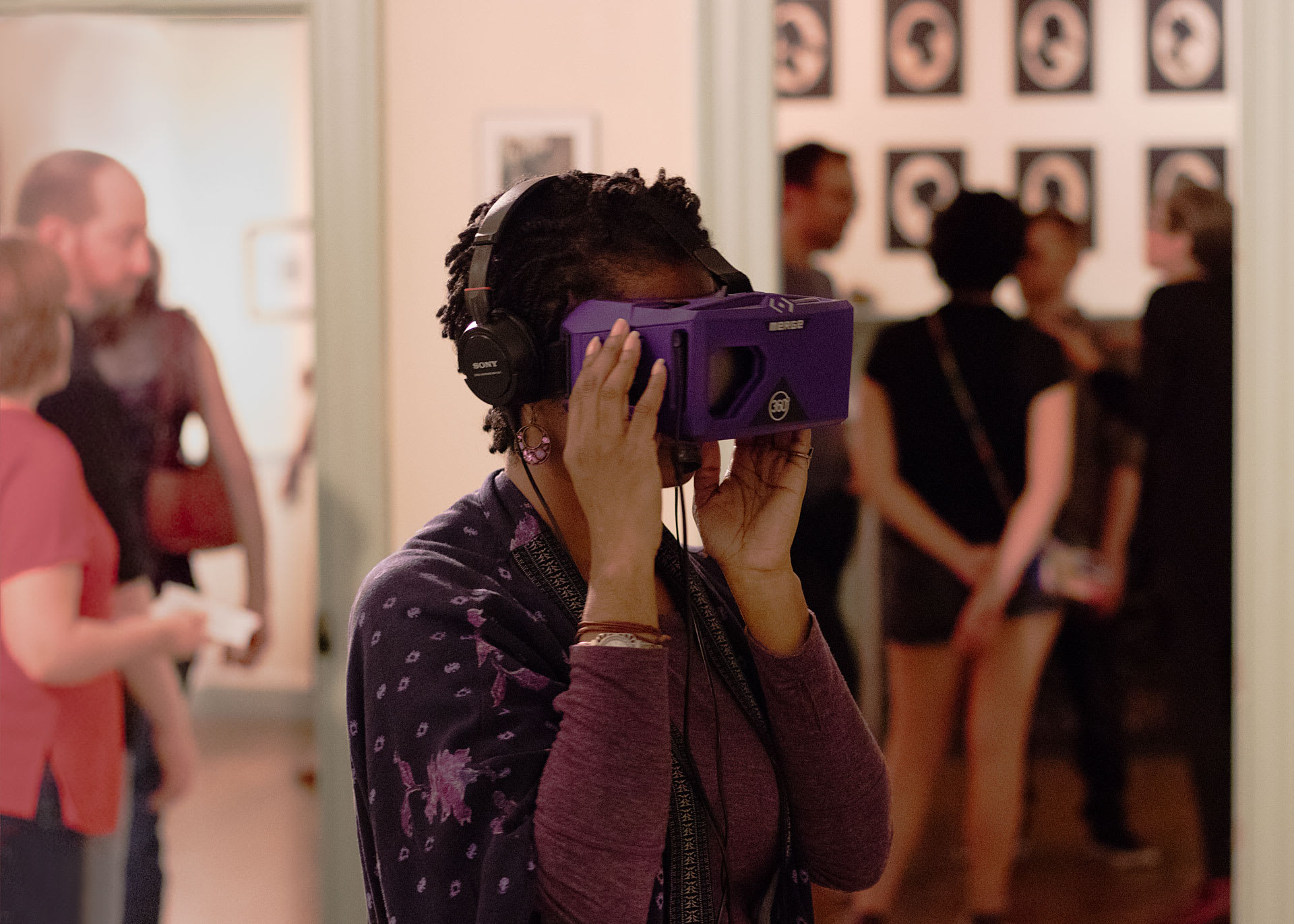
I created two new pieces for the exhibition Birdland in the Anthropocene at the historic Peale Center in Baltimore. The former Peale Museum was one of the first museums in the United States, displaying artwork and natural specimens from the collection of Charles Wilson Peale. Now a historic landmark with rotating exhibits, the building served as appropriate backdrop to this exhibition about the precarious state of birds in the Twenty First Century.
Menagerie, holographic installation
I installed a site-specific hologram in the fourth floor attic of the former museum. Viewers climbing the stairs found a black curtain with a small window cut out, revealing the shimmering ghosts of birds, endangered and iconic. The video projection utilized a large sheet of glass to create the classic Pepper's Ghost illusion, which gave the appearance of images floating in a shadowy attic.

The blue tint and flickering scan lines were a nod to the ubiquitous hologram design of Star Wars, suggesting a future where extinct birds are exhibited as digital ghosts. While really a simple illusion, the "hologram" taps into the wonder of cinematic futures, updating the mission of early Wunderkammern museums to present nature as spectacle. Today's audiences might not be enthralled by taxidermied specimens, but I hoped to create a similar intrigue by having viewers peer though a different sort of glass.
Avian Perspective, 360-degree video
Following the theme of spectacle and vision, I experimented with a new 360-degree camera to create a virtual reality video depicting the contemporary life of birds. The VR goggles used in the museum once again presented nature on the other side of glass, this time showing clips of natural and urban settings that presented the world from a bird's point of view. Placing the camera low to the ground or high in tree branches, the 360 video provides a disorienting view that is at times exacerbated by experimental editing techniques.


Towards the end of the video, the frame is multiplied and squished to give viewers a superhuman field of view (FOV). As Malcom Gooding explains in a clip from a vintage nature documentary, many birds have a wider FOV than humans because of the placement of their eyes on the sides of their heads. Avian Perspective offers a crude simulation of this alongside more documentary style footage of birds in zoos, yards, and, yes, grocery stores.
Watch the following video on YouTube for interactive 360-degree viewing: